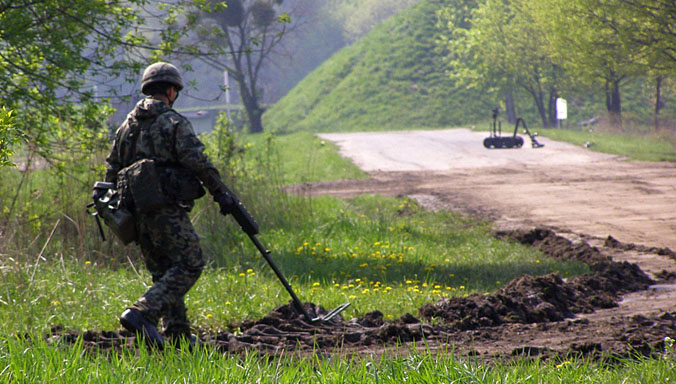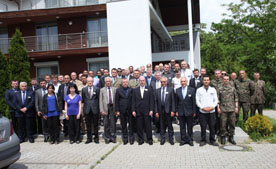Chemical improvised explosive devices: responding to the threat
According to the United Nations Assistance Mission in Afghanistan (UNAMA), improvised explosive devices (IEDs) were the leading cause of civilian deaths and injuries in 2013. They accounted for 34 percent of all civilian casualties and are the biggest killer of women and children in Afghanistan.

IEDs are intended to cause maximum damage to life, both civilian and military, and are among the most deadly of terrorist acts.
A global threat
The use of IEDs in terrorist attacks is not limited to Afghanistan. They are frequently used against society and governmental institutions. The international scale of this threat has been highlighted in recent years by attacks such as those in Madrid in 2004, London in 2005 and during the Boston marathon in 2013.
Increasingly, terrorists are using chemical, biological, radiological versions of these devices. Conventional IEDs are combined with highly toxic chemicals (Ch-IED), biological materials (B-IED) or radioactive materials (R-IED) – better known as “dirty bombs”.
Ch-IEDs, sometimes using chemical warfare agents (CWA), are designed to amplify the devastating effect of a classic IED, dispersing harmful and even lethal materials that cause more deaths and create a stronger psychological impact on their victims. The devices are deployed through unconventional means, such as mines and suicide bombers. This makes them more difficult to detect and they require a more complex response.
Prevention and response training
Many governments are not fully prepared for the response to the threat of Ch-IEDS. Whereas these procedures are well-developed for classical IEDs, this is not always the case for Ch-IEDs, which require a very specific approach, especially in procedures for recognition, and disposal /neutralisation of such devices. As such, there is a real need to train a maximum number of international and national experts in this field.

An advanced training course on “Identification and neutralisation of chemical improvised explosive devices” took place in Wroclaw, Poland from 26 to 30 May. Twenty-five commanders of military and civil emergency units, bomb squads and high-level officials responsible for the management of emergency situations joined experts from government, international organisations and academia. The trainees came from 11 NATO and partner countries: Algeria, Azerbaijan, the Czech Republic, Egypt, Jordan, Kuwait, Mauritania, Poland, Turkey, Ukraine and the United Arab Emirates.
Designed to enhance public security through improving international awareness and preparedness for response to Ch-IED attacks, the course consisted of a series of lectures by high-level experts in the field, laboratory demonstrations and field exercises. Experts explained advanced technology and best practices to prevent and manage the consequences of these deadly devices. The field training introduced participants to light and heavy armoured bulldozers, robots, personal protection and decontamination on-site and off-site, and equipment.
"During this course very important topics have been trained and discussed, which can really occur in our lives. No one is immune from these situations, but such courses and discussions help to find optimal solution in the case when terrorists use the IED with hazardous materials,” said Farid Gahramanov, Chief of Civil Defence Troops of the Ministry of Emergency Situations in Azerbaijan.
The training is intended to help decrease vulnerability and increase resilience in incidents involving Ch-IEDs and facilitate the development of specific procedures and specialised training on the recognition, handling and safe disposal of Ch-IEDs in NATO partner countries.
Maksym Dovhanovskyi, Chief of the Sector of Chemical, Biological, Radiological and Nuclear (CBRN) Protection at the Ministry of Emergencies of Ukraine in the Lviv region explained, "I am responsible for the organisation of radiation and CBRN protection in the region. The course gave me the opportunity to learn a lot about IEDs and assess the threat resulting from using these devices combined with chemical filling".
The course was co-organised by the Military University of Technology in Warsaw and the Institute of Bioorganic Chemistry and Petrochemistry, Ukraine, and was supported by the NATO Science for Peace and Security (SPS) Programme.
